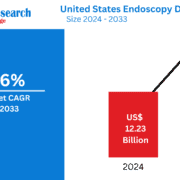Household Cleaners Market: Key Drivers, Regional Insights & Forecast to 2033
Household Cleaners Market Size and Share Analysis – Growth Trends and Forecast Report 2025-2033
Introduction
The global Household Cleaners Market was valued at USD 39.68 billion in 2024 and is projected to reach USD 61.50 billion by 2033. This reflects a compound annual growth rate (CAGR) of 4.99% from 2025 to 2033. Increased hygiene awareness, rapid urbanization, and growing demand for eco-friendly cleaning products are key factors driving market growth.
Market Overview
Household cleaners are essential chemical agents used to maintain hygiene in homes by removing dirt, stains, grime, and harmful microorganisms. They are available in various forms, such as liquids, powders, sprays, and wipes. These cleaners are vital for maintaining a safe, sanitized, and comfortable living environment.
The market comprises a wide variety of products like surface cleaners, glass cleaners, toilet bowl cleaners, specialty cleaners, and bleaches. Additionally, there is a growing demand for eco-friendly products made with natural ingredients and recyclable packaging.
Growth Drivers
1. Hygiene and Sanitation Awareness
The COVID-19 pandemic significantly heightened awareness of hygiene and sanitation, leading to an increased demand for products capable of eliminating harmful bacteria and viruses. The demand for disinfectant-based and multi-purpose cleaners has surged, as consumers focus on maintaining cleanliness to prevent illnesses.
2. Urbanization and Changing Lifestyles
With urbanization on the rise and living spaces becoming smaller, consumers are seeking efficient and space-saving cleaning solutions. Multi-purpose sprays and wipes are particularly popular among busy working professionals and dual-income families who prefer quick and easy cleaning methods.
3. Eco-Friendly and Sustainable Products
The growing concern over environmental sustainability is prompting consumers to opt for cleaning products made with natural ingredients. This shift has spurred the demand for biodegradable and eco-friendly cleaning agents, and government regulations are encouraging manufacturers to produce safer, greener products.
Challenges in the Household Cleaners Market
1. High Competition and Pricing Pressure
The household cleaners market is highly competitive, with both established brands and private-label products offering similar features at lower prices. Manufacturers must balance pricing with product quality, which can be challenging, especially in price-sensitive markets.
2. Stringent Regulations
Manufacturers must comply with various safety, chemical, and environmental standards. This not only increases production costs but also delays product development. Regulatory restrictions on certain chemicals and packaging materials add another layer of complexity for manufacturers.
New Publish Reports
- Global In-Vitro Diagnostics Market Size and Share Analysis – Growth Trends and Forecast Report 2025-2033
- Global Bakery Products Market Size and Share Analysis – Growth Trends and Forecast Report 2025-2033
- Global Food Processing Market Size and Share Analysis – Growth Trends and Forecast Report 2025-2033
- Global Frozen Food Market Size and Share Analysis – Growth Trends and Forecast Report 2025-2033
Regional Insights
United States
The United States is a significant player in the North American market, with high demand for disinfecting cleaners due to public awareness about hygiene. Urban-based homes require cleaners that maintain cleanliness in confined spaces. Additionally, eco-friendly products are gaining traction, driven by growing environmental concerns.
Germany
Germany’s market is increasingly focused on sustainable and high-quality cleaning products. With strict environmental regulations and a strong preference for green cleaning options, the German market is becoming a hub for eco-conscious consumers.
China
China is witnessing rapid urbanization, with rising disposable incomes contributing to the demand for modern cleaning solutions. Consumers are shifting away from traditional cleaning methods and opting for multi-surface and disinfectant cleaners.
Brazil
Brazil’s market is growing as more people move to cities, driving demand for cost-effective and versatile cleaning solutions. Despite economic volatility, the rising middle class is able to spend more on quality cleaning products.
South Africa
In South Africa, the demand for multipurpose, eco-friendly cleaning agents is growing. However, premium cleaning products face challenges in rural areas due to higher costs and limited availability.
Segment Analysis
By Type
- Surface Cleaners
- Glass Cleaners
- Toilet Bowl Cleaners
- Specialty Cleaners
- Bleaches
- Others
By Application
- Kitchen Cleaners
- Bathroom Cleaners
- Fabric Care
- Floor Cleaners
By Distribution Channel
- Online
- Offline
Key Players Analysis
The market is dominated by several key players, each offering a wide range of products. These include:
- Church & Dwight Co. Inc.
- Colgate-Palmolive Company
- Henkel AG & Company KGaA
- Reckitt Benckiser Group plc.
- The Procter & Gamble Company
- Unilever Plc
These companies are focusing on product innovation, sustainability initiatives, and expansion into emerging markets to strengthen their position.
Key Questions Answered in This Report
- What was the global household cleaners market value in 2024?
- The global market value in 2024 was USD 39.68 billion.
- What is the projected market size for household cleaners by 2033?
- The projected market size by 2033 is USD 61.50 billion.
- What is the expected CAGR from 2025 to 2033?
- The expected CAGR is 4.99%.
- What types of household cleaners are covered in the report?
- The report covers surface cleaners, glass cleaners, toilet bowl cleaners, specialty cleaners, and bleaches.
- What applications drive the demand for household cleaners?
- Key applications include kitchen cleaners, bathroom cleaners, fabric care, and floor cleaners.
- What are the key growth drivers for the household cleaners market?
- Key drivers include hygiene awareness, urbanization, and eco-friendly product demand.
- What challenges do manufacturers face in the household cleaners market?
- Challenges include high competition, pricing pressure, and stringent regulations.
- Which countries have significant market demand for household cleaners?
- Significant markets include the United States, Germany, China, Brazil, and South Africa.
- Who are the major players in the household cleaners market?
- Major players include Procter & Gamble, Unilever, Henkel, Reckitt Benckiser, and Church & Dwight.
- How is the household cleaners market expected to evolve by 2033?
- The market is expected to continue expanding, driven by increased hygiene awareness, urbanization, and sustainability trends.











